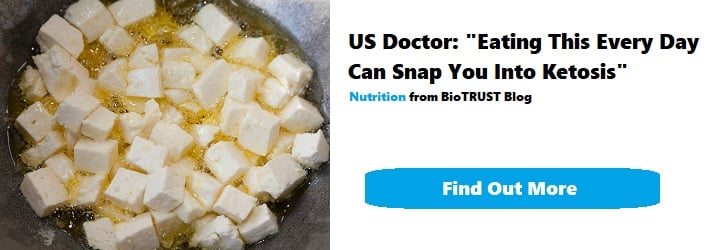The Healthiest Ways to Cook and Eat Eggs (with Recipes)

Which came first…the chicken or the egg? Some would argue that the egg certainly must have come first, but not necessarily the chicken egg. So, it seems we aren’t going to lay this argument to rest anytime soon (pun intended).
Whether you side with scientists or philosophers, I think we can all agree that eating the whole egg is beneficial to your health.
In my humble opinion, cooking the egg is crucial, as we don’t want to subject ourselves to that harmful bacteria known as salmonella. I am sure most of our parents have put that fear in us at a very early age, but truth be told, this risk is actually very low. Regardless, cooked eggs contain a better source of protein and can allow for more nutrient absorption. This is not to say cooked eggs have more protein than raw, but rather our bodies absorb 50 – 60% of the protein in raw eggs compared to 90% of the protein in cooked eggs.
But does it matter how you cook this whole egg?
Health Benefits of Eggs
Eggs are a complete source of protein. One single serving egg contains 70 calories, 5 grams of fat, 6 grams of protein, and zero carbs. As if that wasn’t impressive enough, eggs contain vitamins A, D, E, B2, B12, and biotin along with iron, potassium, calcium, and selenium. Eggs also contain choline and folate, two important nutrients for supporting cell growth, brain health, and healthy pregnancies. It is no surprise the commercials tout the egg as “the incredible, edible egg.”
Healthiest ways to Cook and Eat Eggs
1. Hard-Boiled Eggs

This method of cooking eggs keeps the egg intact, does not include any added cooking oils or additives, and makes for a really healthy and portable snack, especially for busy folks on the go.
You just toss the egg, in its shell, into a pot of boiling water and allow it to cook for the desired time, and voila! There is some controversy over just how long to cook an egg for the perfect result, and I would say that depends.
If you are looking for a firm yolk that is pastel yellow in color, then I would boil for roughly 7 minutes, then turn off the heat, and allow the egg to continue bathing in the warm water. If you are more partial to a soft-boiled yolk, which is a golden yellow and slightly runny, then you are looking at closer to 5 minutes. Once cooked, remove from heat altogether, and soak in an ice bath to stop the cooking process.
2. Poached Eggs
 If you have ever had Eggs Benedict, chances are you have enjoyed poached eggs. This method involves keeping the egg intact but cooking out of the shell. Similar to the hard-boiled egg, you cook the egg in a pot of boiling water, but you are cracking it into the boiling water, allowing it to cook without its shell, then removing from the water before consuming. And this doesn’t include any cooking oils, or additives, so your calories are coming solely from the egg itself.
If you have ever had Eggs Benedict, chances are you have enjoyed poached eggs. This method involves keeping the egg intact but cooking out of the shell. Similar to the hard-boiled egg, you cook the egg in a pot of boiling water, but you are cracking it into the boiling water, allowing it to cook without its shell, then removing from the water before consuming. And this doesn’t include any cooking oils, or additives, so your calories are coming solely from the egg itself.
Since you are essentially leaving the yolks runny, it would be best to use pasteurized eggs to avoid that pesky salmonella we discussed earlier.
The end result is like a puffy cloud or pillow of white, surrounding a golden-yellow fluid yolk. This is perfect for enjoying solo or on your favorite toasted bread. My personal favorite is with Canadian bacon, and Hollandaise sauce, atop an English muffin. Another variation of the popular Eggs Benedict is with smoked salmon and spinach.
3. Sous Vide Eggs
Starbucks has made sous vide egg bites a trendy way to enjoy eggs. While this method is similar to both the hard boiling or poaching eggs, in that you are cooking the egg in boiling water, you are doing so inside a vacuum sealed bag. The beauty of using this method is that since the egg is contained in a bag or mold, you can add various other ingredients such as cheese, meats, and/or vegetables.
There are a few options for these at my local grocery store, Starbucks has 3 varieties to choose from, and with the invention of the Instant Pot, you can easily make your own. I have actually created my own copycat recipe, which, if I might say, is pretty darn amazing. This is my recipe:
Bacon + Gruyere Egg Bites
Ingredients:
- 4 eggs
- 1/2 cup gruyere cheese (shredded)
- 1/2 cup cottage cheese
- 1/4 cup cooked bacon (crumbled)
- Salt and pepper, to taste
Directions:
- Add first three ingredients to a blender or NutriBullet® and mix until combined.
- Add bacon and give a few quick pulses to get it evenly distributed and broken down a bit.
- Pour mixture into silicon egg mold (Instant Pot).
- Add one cup of water to Instant Pot, and insert trivet.
- Place egg mold on top of trivet.
- Set timer to pressure cook 8 – 10 minutes.
- Allow eggs to set for a minute or two before attempting to remove.
- Enjoy!
Chef Note: You can add anything to these that your heart desires. The two constants are the eggs and cottage cheese, but let your creativity run wild in terms of the mix-ins. Cream cheese works well, so does Monterey Jack. I am a huge fan of Gruyere in this, but then again, cheese is one of my favorite foods, so…
4. Scrambled Eggs

In case you missed it, I have rolled up my sleeves and cooked eggs six ways to determine the best way to make scrambled eggs. It is important to keep in mind that the best tasting eggs may not necessarily be the healthiest, but in my opinion, as long as you are mindful of the types of fats and oils you are using, you can cook them whichever way you prefer.
Some folks enjoy whisking them with water, some with butter, while others use milk or cream. It is not only a matter of taste but texture.
BREAKING: US Doctor: “Eating This Every Day Can Snap You into Ketosis”
5. Baked Eggs
If you haven’t made individual baked eggs, then you are really missing out. You can simply crack an egg into a muffin tin and cook several of them this way as they freeze beautifully for a quick and easy breakfast any day of the week. You can add various toppings such as bacon, mushrooms, and tomatoes—the sky is the limit.
You can also bake a quiche, which is just using the scrambled egg mixture, usually combined with vegetables and/or meats, and served like a pie. A great way to dodge unwanted calories is to make a quiche sans crust. The egg will form its own little crust and hold everything together nicely. When I am feeding a large crowd, I like to throw a dozen eggs along with everything but the kitchen sink into a casserole dish and bake it.
One such recipe has become my go-to for hurricane prep, which occurs right about the end of summer every year. When you are busy running around boarding up windows and making sure you have plenty of candles, the last thing you want to worry about is meal prep.
6. Fried Eggs
I know, I know…you never thought I would have a fried food listed in one of my healthiest foods articles, but eggs are different. To fry an egg, all you really need is a non-stick pan or a little pat of butter or cooking spray.
Simply crack the egg into the pre-heated pan and allow to cook. There are two ways this can be done. The first is to allow the egg to cook on only one side, also known as sunny-side up, which leaves the yolk a little runny. Much like the poached egg, this is great with a side of toasty bread.
The second is to gently flip the egg once the white is no longer translucent, allowing the yolk to cook a little further, also known as over-easy. I generally cook eggs this way when I am going to add them atop a plate of veggies or hash.
Pretty much any way your eggs are scrambled (or fried, baked, hardboiled, etc.) is a good way to eat this nutrient-packed food. So, pick your favorite, and enjoy!




 7 Signs Your Body is Seriously Low on Collagen (not just wrinkles)
7 Signs Your Body is Seriously Low on Collagen (not just wrinkles) Health Expert: "Turmeric Doesn't Work (unless...)"
Health Expert: "Turmeric Doesn't Work (unless...)" 3 Warning Signs Your Probiotic Supplement is a Total Waste
3 Warning Signs Your Probiotic Supplement is a Total Waste

